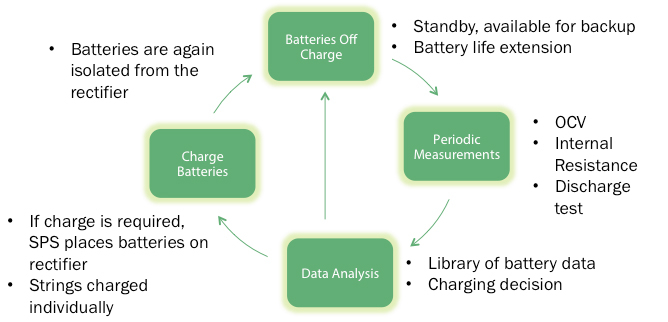What did America look like at the turn of the 20th Century? It was an age of advancement, and the most important feature was the emerging middle class, which fueled the labor supply for the Industrial Revolution creating new markets in military goods, manufacturing, travel, and leisure. Teddy Roosevelt signed the Antiquities Act in 1906, helping to protect National Landmarks. Technological advances included the phonograph, light bulb, machine gun, air conditioning, airplanes, and drip brew coffee. Progress was on the march, but it was leaving populations behind. Children worked arduous jobs earning a couple of dollars a day if they were lucky. Women could still not vote.
[…]In just two weeks the ICT industry will gather in Orlando for the biggest show of the year, ISE EXPO. Each year, ISE brings in telecom professionals from all 50 states and many countries for educational sessions and an exhibit hall with hundreds of vendors.
[…]Servato is attending NCAEC's 2017 Tech Assessment and Strategy for Co-ops Conference
The North Carolina Association of Electrical Cooperatives (NCAEC) serves the needs of their 26 member cooperatives. The focuse of the TASC confernce is to provide members access to the latest education and vendors that can have an impact on security, reliability, and service.
At the Servato booth attendees will be able to learn:
- What remote management looks like and how it leads to improved reliability and cost savings.
- Case studies that demonstrate the value of battery management.
- Efficiencies that can be gained from automation.
Adaptive Charging: Benefits of Adaptive Charging (Part 4 of 4)
This article originally appeared in the 2Q17 edition of Battery Power Magazine. The article is published on our blog in 4 parts. You can access the full article here.
Adaptive Charging Extends Battery Life and Delivers other Benefits
Continuous charging as a method of maintaining standby batteries at a full state of charge has been standard for many years, but has serious negative consequences that can add significant cost to battery management budgets. Continuous float charging accelerates battery failure due to increased temperature, grid corrosion, plate degradation and dry-out.
Adaptive Charging: Principles Adaptive Charging (Part 3 of 4)
This article originally appeared in the 2Q17 edition of Battery Power Magazine. The article is published on our blog in 4 parts. You can access the full article here.
[…]Adaptive Charging: Intermittent or Periodic Charging vs Adaptive Charging (Part 2 of 4)
This article originally appeared in the 2Q17 edition of Battery Power Magazine. The article is published on our blog in 4 parts. You can access the full article here.
[…]Adaptive Charging: The Inefficiencies of Continuous Float Charging (Part 1 of 4)
This article originally appeared in the 2Q17 edition of Battery Power Magazine. The article is published on our blog in 4 parts. You can access the full article here.
The accelerating growth of Internet of Things (IoT) devices and applications require continuous investment in telecommunications networks to provide the connectivity for millions of new devices. As more devices connect to the Internet, service outages become more impactful to the people and businesses that rely on IoT applications. Safeguarding telecom networks from power outages is the Valve Regulated Lead Acid (VRLA) battery. Stationary VRLAs are ubiquitously used at broadband, wireless and cable sites, and millions are in service across the country. Unfortunately, almost all of these batteries, and thus the sites that depend on them, are vulnerable to a reliability-damaging standard: float charging. While float charging will maintain batteries at full charge, it can have a damaging impact on the service life of the battery, which introduces risk and increases maintenance costs. There is a better way to charge batteries, Adaptive Charging, that mitigates the degrading effects of float charge, extending battery life and reducing maintenance costs.
[…]It’s Time to Upgrade Legacy Alarms:
Capital dollars are any telco’s most prized resource, but there is another resource that is increasingly scarce within telecommunications companies large and small: technician man-hours.
[…]Powering your network vision (Reality Check)
This article originally appeared on RCR Wireless' website on June 13th, 2017. To read the original article, click here.
The internet is now the “reason for being” for most wireless and wireline service providers. Indeed, wireless and wireline networks are becoming the internet (homage to Eric Schmidt’s original vision of the network becoming the computer). These broadband networks are increasingly looking and working less like “telecom” networks and more like wide-area IT networks as switches give way to routers and lots and lots of “things” get connected to them. And, of course, none of the internet infrastructure works if it is not powered, which calls to mind yet another critical but distinct network – the power distribution infrastructure of the power utility. Despite being regulated by the same PUC commissioners, planning between and among carriers and power utilities is pretty much non-existent. Their network planning sessions are disconnected, parallel discussions that need to be more integrated if we are to ensure that the Internet is always powered on.
[…]Business Development Manager Alex Rawitz Presenting at the TTA Convention
Disaster preparedness is a major topic for telecom companies large and small. Ensuring that people have access to communications services even during outages is crucial. That's why all sites have backup power, and it's Servato's mission to make sure that the backup power on hand is always adequate.
Alex Rawitz will be speaking about how to use Remote Battery Management technology to better ensure that the right amount of backup power is available when it is needed. He'll cover:
- What remote management looks like and how it leads to improved reliability and cost savings.
- Case studies that demonstrate the value of battery management.
- Efficiencies that can be gained from automation.
Servato will also have a booth at the TTA Show.
[…]







